In everyday life, he was a smiling but enigmatic colleague at work. At the coffee machine in the social kitchen, one could talk with him about scientific highlights, cinematography, and life in general. However, he only spoke when asked. Most often, deep in thought and concentration, he made himself a black coffee in a metal mug with the inscription “Best Dad” and a drawing of planets resembling illustrations from “The Little Prince”. On Monday mornings he would ask me politely and laconically how the weekend had gone. In answering, I felt he was observing more than listening. It was a challenge to get to know Karol’s personality and interests… until one day, quite by accident, I discovered that he was interested in photography. Then began an adventure that is gaining more and more momentum, and I suppose even Karol himself didn’t expect it to take us this far promotionally.
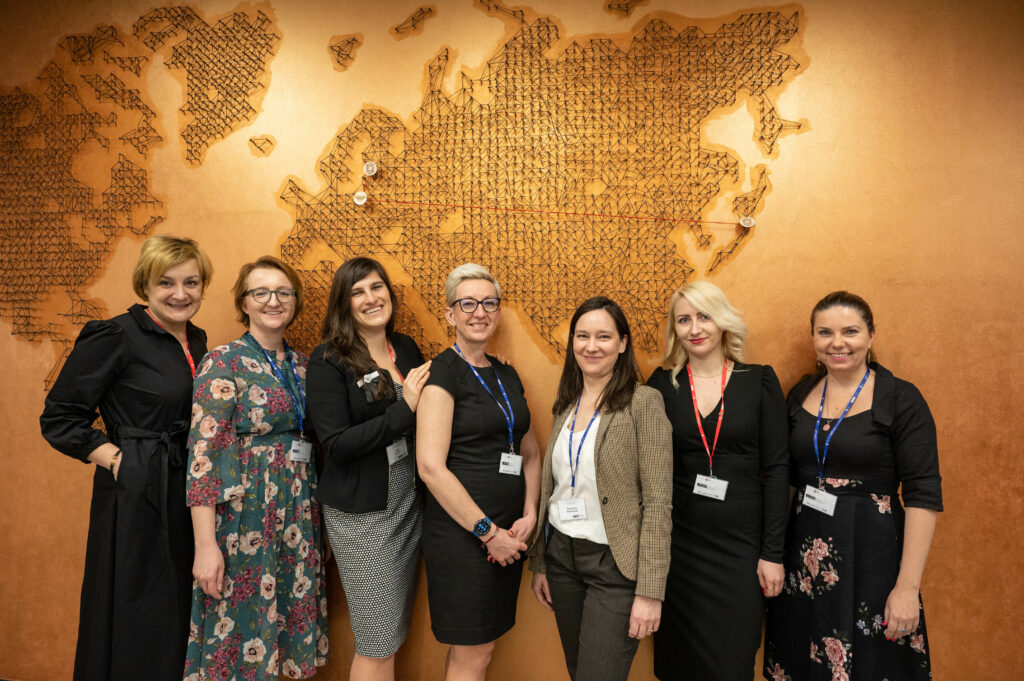
When I first started working in the Communications and PR role, Karol didn’t say a word, and I wouldn’t even recognize his face. He waited out my entire probationary period at ICTER, as if he, too, was evaluating internally whether I would prove myself. No wonder – I am not a scientist, and was to communicate to the world what is the purpose of the scientific research conducted at the centre. After three months the review was positive and then Karol unexpectedly showed up in my office, neighboring his. From a casual conversation, it emerged that he had done his postdoctoral studies in Australia. With enthusiasm, he commented on how creatively and successfully the University of Western Australia promoted itself. He showed me a video of students running around the world chasing their dreams, neither defeated nor discouraged by the harsh conditions – red-hot desert, raging hurricane, snowy Siberian steppe, or New York’s cement jungle. The sparkle in Karol’s eyes made me think that here stood before me an unpolished PR diamond, full of passion and ideas for the promotion of our centre, worthy of the best Australian universities. I decided in spirit that we would create the conditions to polish this diamond.
We did not have to wait long, nor make any special effort, although we would willing to do it. Soon appeared a project of an interview with ICTER scientists for the MIT Management Review Poland magazine, and there was a need to present some photographs to illustrate the text. We did not have these photographs, but we had Karol. Invited to take them, he not only readily agreed, but also involved the entire centre, the management of our host Institute of Physical Chemistry, and half of the Wola district in his photographic session. It was July, the sun was blazing from the sky outside the windows, and the air-conditioning in the offices was freezing us off. Karol came to work laden with professional equipment (camera with lenses, tripod, flashes) and started spreading ideas for photographic shots, like a magician reaching for ever newer tricks to enchant the audience. Assisting him, I called the scientists working in the open-space at Skierniewicka to the laboratories, to operate the equipment and pose for pictures. It was heartening to watch how younger and older scholars actively and enthusiastically participated in the session. They all rose to the challenge side by side, realizing how important it is to show to external audiences what we do at ICTER, and why the research results published in world-class scientific journals (Nature, Optics Letters or eNeuro, etc.) and the latest technological solutions we develop, translate positively into the quality of life and visual health of society.
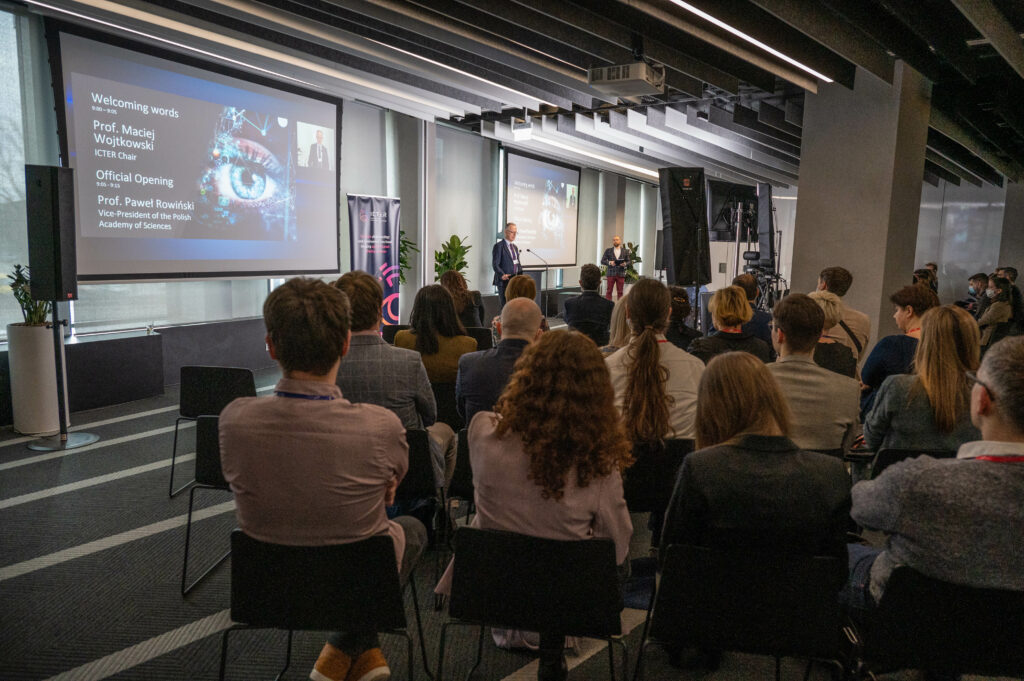
However, Karol was just getting started. It turned out that he had spent several afternoons before the session walking around Wola, looking for the best places for photographic frames. When the head of the ICTER, Professor Maciej Wojtkowski, and director Adam Kubas of the IPC PAS joined us, we set off on an artistic stroll. We walked along unfamiliar alleys and back streets until we came across a Parisian-style café garden, where we stopped for a café au lait. Karol, meanwhile, was busily working, appearing and disappearing, once behind a tree, once on the grass in a reclining position, in search of the perfect photo of the leader of our centre and our host institute, affiliated with the Polish Academy of Sciences. Then we headed to the surroundings of modern skyscrapers, with which Warsaw rivals Scandinavian business buildings. Karol was in his element, giving instructions on how to pose to our models. On our way back he led us to a building with an old brick texture, contrasting with the omnipresent stock exchange scenery, and to a nearby tunnel between buildings, where he took the best photo of Prof. Wojtkowski that I have seen so far.
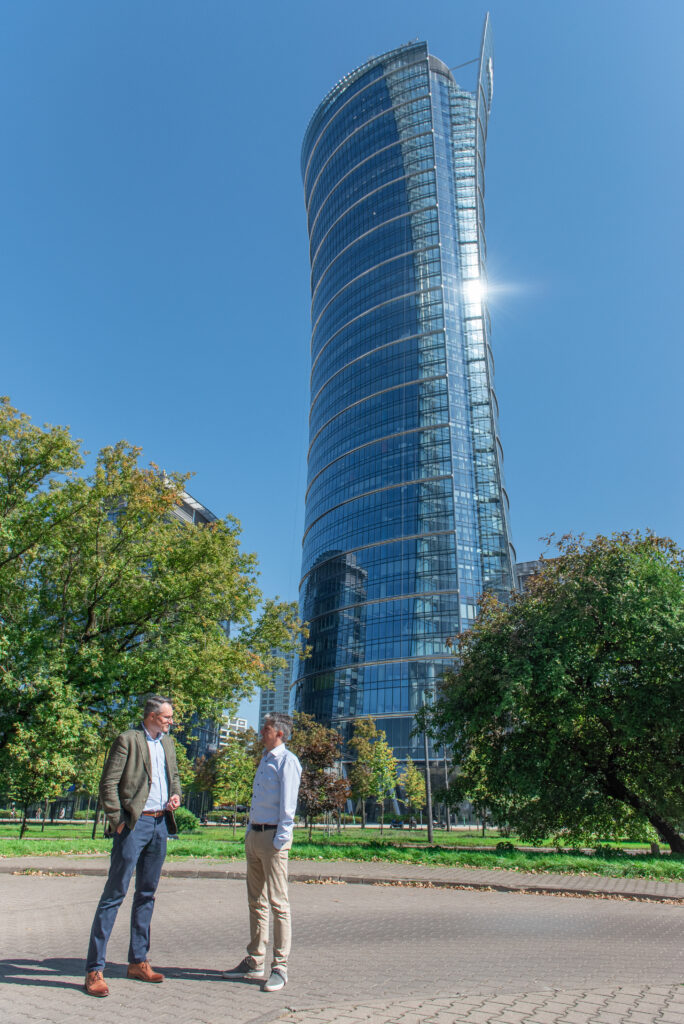
A few days after the session, Karol handed over 90 photos and copyrights for us to promote the centre. Even though he acted as a hobbyist, he did his job in a fully professional manner, and ICTER finally got the quality of photos it deserves.
Now it’s time to give the floor to Karol himself to tell us how his love for photography started, and what he wants to convey to the world through it.
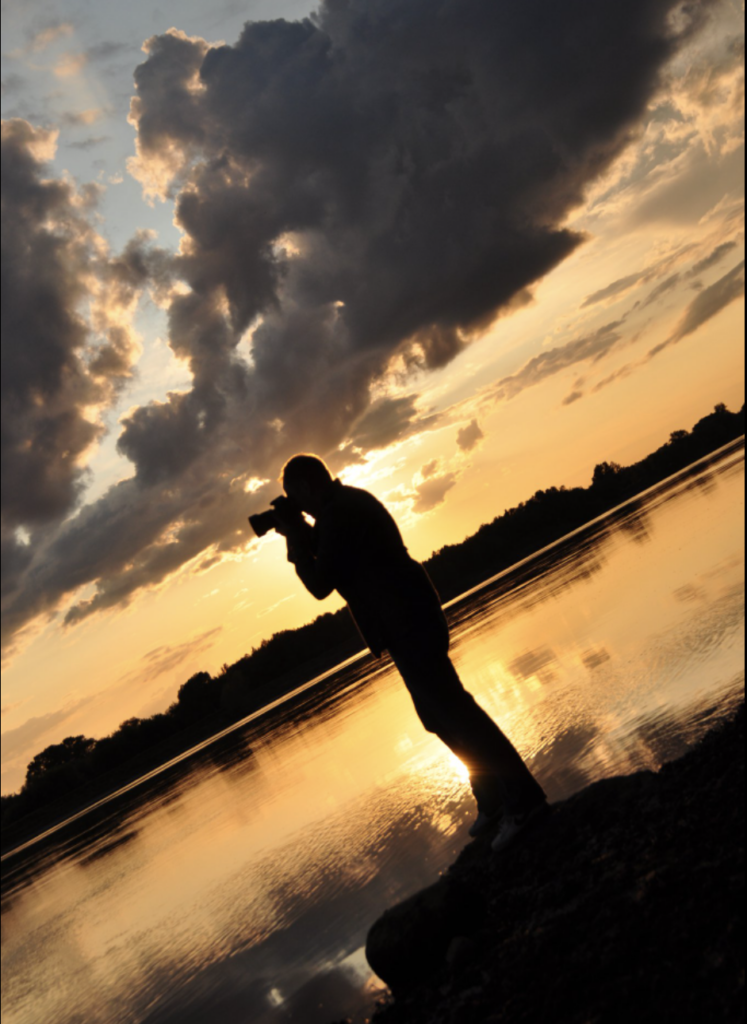
Karol, why do you take pictures? Where did this passion come from?
That is a difficult question. I take pictures because I like it, because it relaxes me and because I can make others happy with my photos. Many of my photos hang on the walls at my family and friends’ houses. Moreover, I have always felt that somewhere inside me there is an artist’s soul smouldering, and this job allows me to show a part of this soul outside.
You know, Ania, with photography you can create your own worlds. Ten people can see the same view, and ten photographers will show ten different worlds in their pictures. In Toruń, where I did my master and PhD, I took part in so-called Photo Walks. The walks are cyclical meetings of photography enthusiasts (from complete amateurs to experienced professionals). In such groups we were visiting selected districts of Toruń in order to immortalize them in many individual ways in photographs. The residents of Toruń visiting the exhibitions of our photographs were delighted and often moved by how nicely and unconventionally one can show the often unattractive at first sight corners of the City of Angels.
Since I was a child I felt a part of an artist in me, I tried various things until I found my inner haven: photography. In 2007 I bought my first decent camera and started to take pictures, mostly of my family. When I caught the bug, I started to invest in lenses, read a lot and experiment. It’s good to know the theory, but practice is the best. I’ve made countless mistakes, discovering what works and where I can go with my imagination. Through trial and error, I seem to have a better sense of how to approach the effects I want to achieve in a photograph.
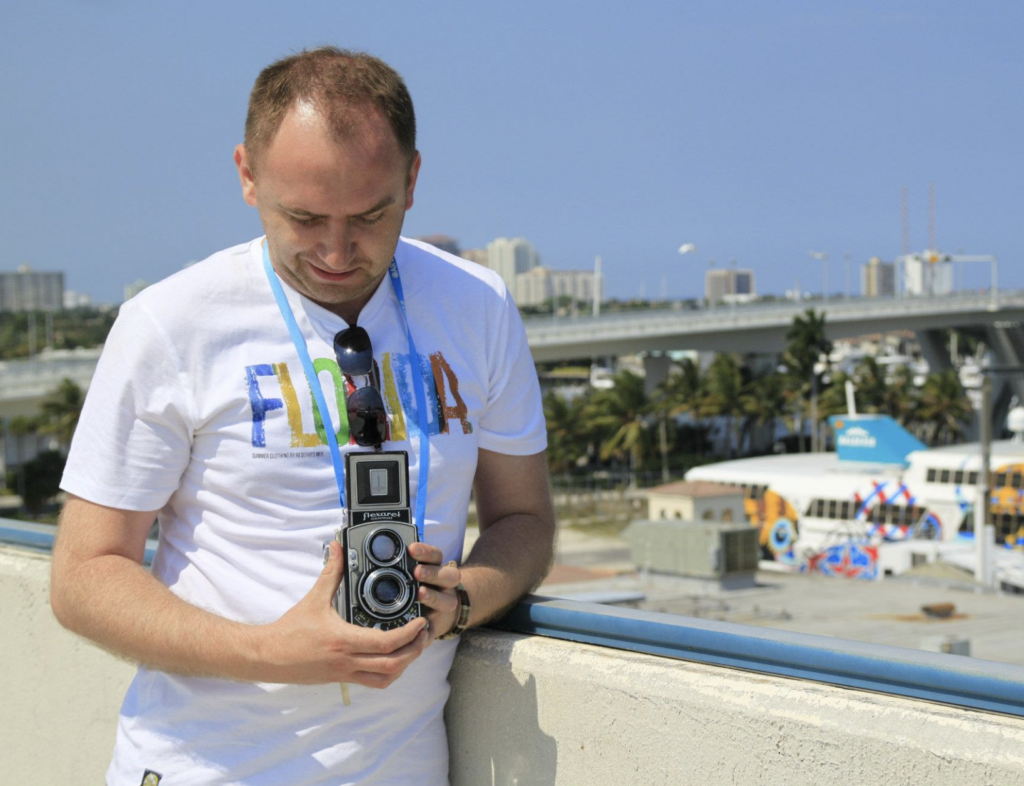
How does being a scientist influence your sensibility and photographic craft?
What I do in my day job allows me to understand technology better, because dealing with optics affects the technical aspects of photography. When constructing different optical systems, there is always a bit of combining, looking for new ways of doing things. For example, my current photographic project focuses on symmetry achieved through simple image manipulation. I am creating new worlds with a trained method. I think I have developed a certain sense and sometimes I view a frame that I want to capture precisely in terms of its use in my symmetrical project.
Also, thanks to my academic work I am lucky to travel, get to know different worlds, people, habits other than in our country and this influences the way I look at the world, and allows me to take pictures that I wouldn’t take staying back home.
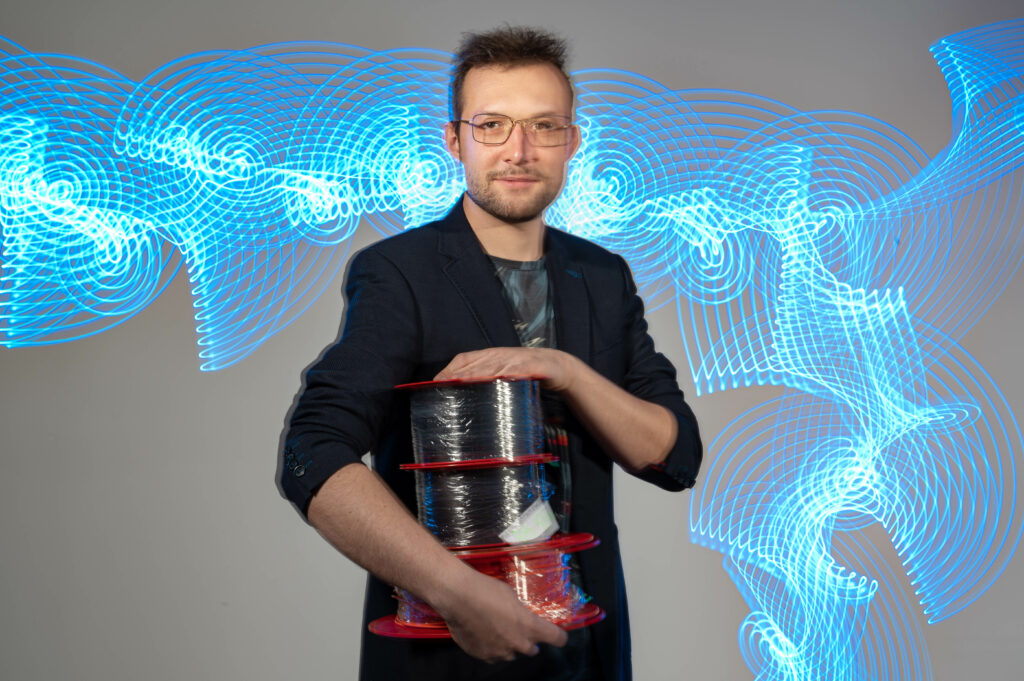
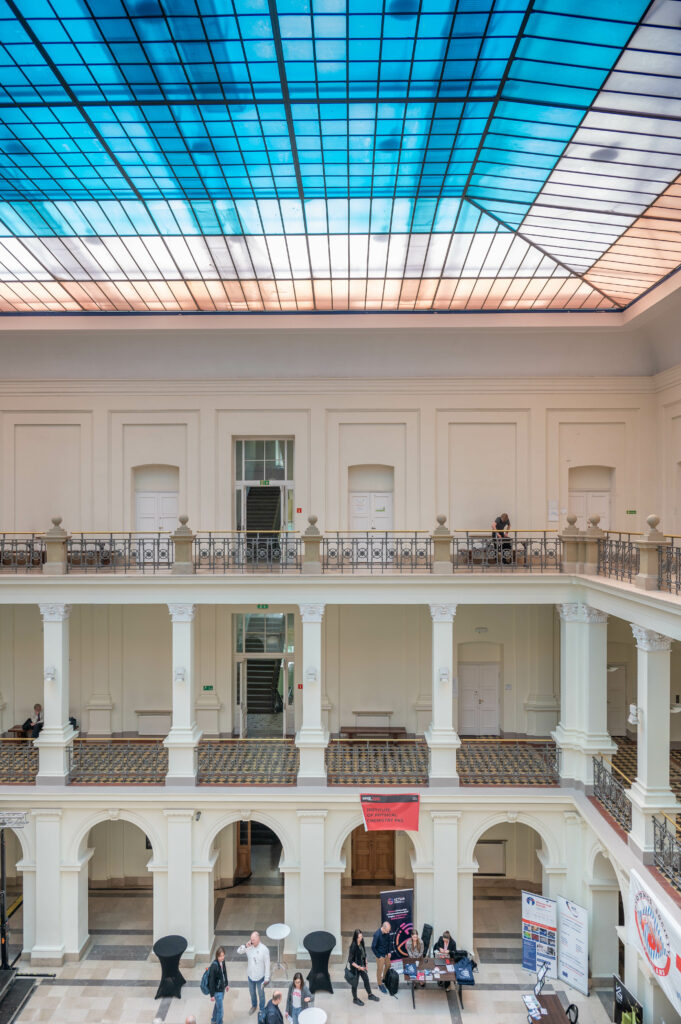
What do you want to communicate when you photograph the events and work of ICTER researchers?
Since the beginning of my PhD studies, I have taken a lot of photos for documentation or promotional purposes, such as for posters for conferences. When photographing the work of researchers and scientists at ICTER, I want to show that we are normal and cool people – which is true. I want to reflect in the picture that we can have fun doing complicated experiments and taking pictures as well, and that we do awesome things and have fabulous equipment, thanks to which we create a magical world.
During the last session with Piotr Węgrzyn we were a little concerned if we would get the desired effect on the pictures. We had a lot of fun painting with light, and we enjoyed the fact that we can achieve Photoshop-like effects directly on the photo.
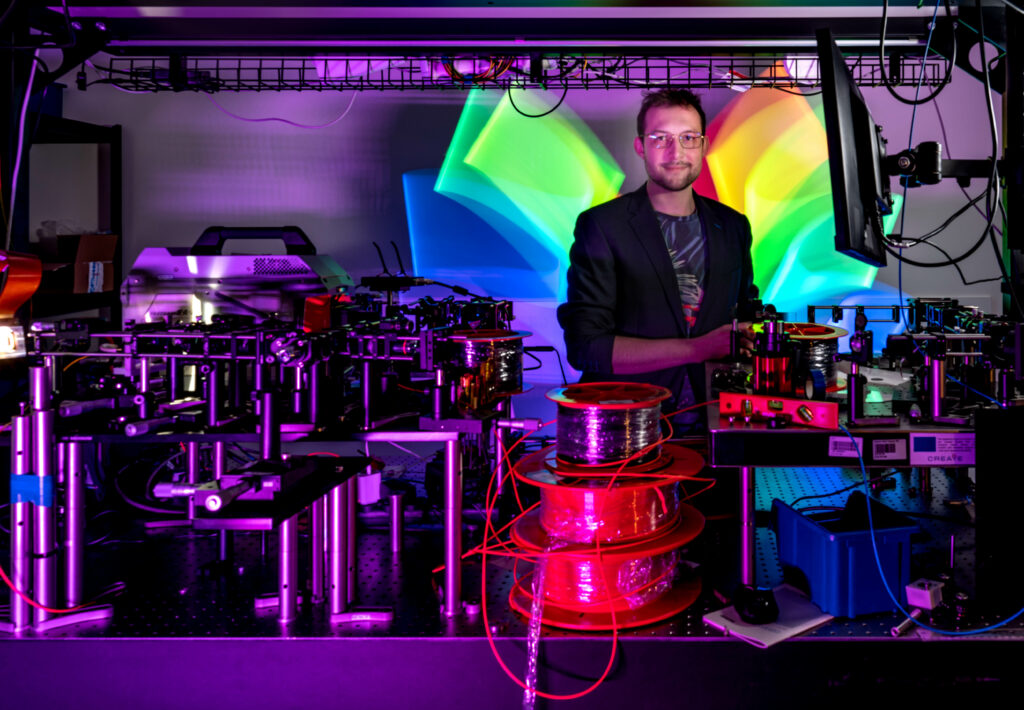
A year ago you started taking pictures for ICTER. Your first session was published in MIT Sloan Management Review Poland. I remember those lab photos, they were quieter, more focused on showing the whole group, with as much equipment as possible, set up. They were nicely shot, but conservative. Over time you have improved more and more technically and artistically. Your most recent photo session illustrating a press release for our publication in Optics Letters went to Phot.org and EurekAlert reaching an audience of 4.8 million. These photos are completely different: adventurous, with a claw, an element of wildness, astonishing, dazzling with the play of light and movement. What is behind this metamorphosis of your identity as a photographer?
It’s tough to give a quick and simple answer here. The session for MIT was realized a bit on the fly and without much preparation. As you noticed the shots were more filled with people. In the rather cramped lab space, there is not much room to work with a larger number of people. Also, this was the first session of this type for me with the idea of using the photos for some popular article. I’ve done some photography in labs before, but it was more of an incidental experience. The last session, when I photographed Piotr – special thanks to Bartek Bałamut for help with this session – was different. First of all I photographed one person. We had more time for rehearsals, settings, more time for crazy ideas. The session also had a very precise theme – it was meant to be about a specific publication. I think that’s why I prepared myself for it more than for the previous “let’s make some photos in the lab” session. Undoubtedly the fact that I have a clear understanding of the experiments described in the publication helped.
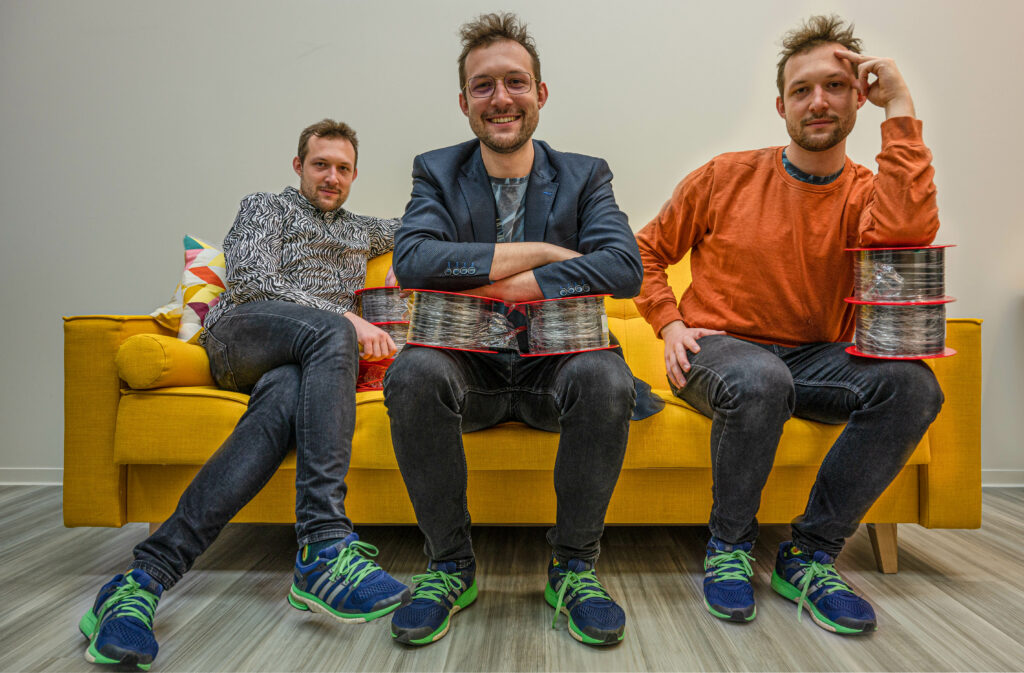
Can we say that you specialize in science photography?
After the first photos (those intended for publication at MIT) there was a buzz that maybe we should do more in this direction to promote and spread the work of ICTER. I think that triggered ideas in my head about what kind of photos could be taken of individuals from the centre. I did the last session in that spirit, but I still have many new ideas. Who knows, maybe some of them will come to life. Science photography is an interesting niche in the market. Usually photos of scientists are static, typically classic portraits. Not everyone pays attention to the power of promotion, and in my opinion we should use this potential all the more because we honestly have something to be proud of.
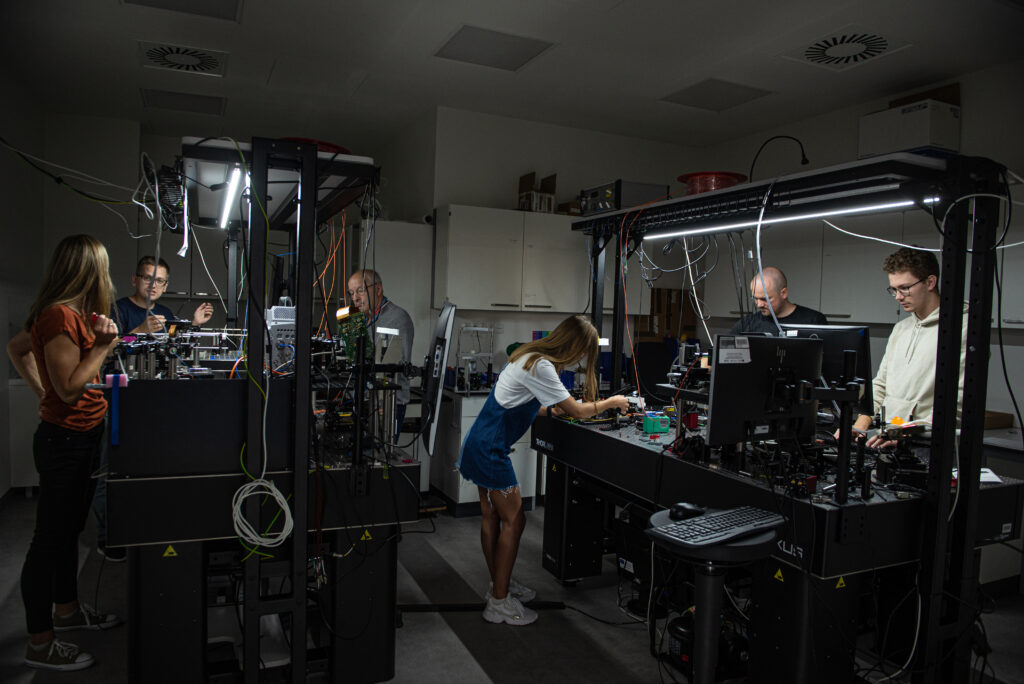
What do you wish for yourself as a photographer in the future?
I dream of a photographic studio with lots of space to realize the oddest ideas. I would like to grow as a photographer. I like playing with associations, looking for symmetry, forms, colors, shades, contrasts and abstract atmosphere. For now, it’s a hobby, I don’t have much time, but there are many projects. When I retire, I dream about photographing landscapes, for example Polish mountains, Scottish landscapes or exotic climates. For such pictures the key to success is to be in the right place at the right time. I remember how a few years ago my friends and I drove through the night to get there before dawn to photograph the Grand Canyon bathed in the first rays of the rising sun.
Thank you for this interview Karol and I wish you to raise your photographic bar higher and higher each year until you take that unique, perfect, one in a hundred thousand, worthy of the International Photography Awards, most beautiful photograph.
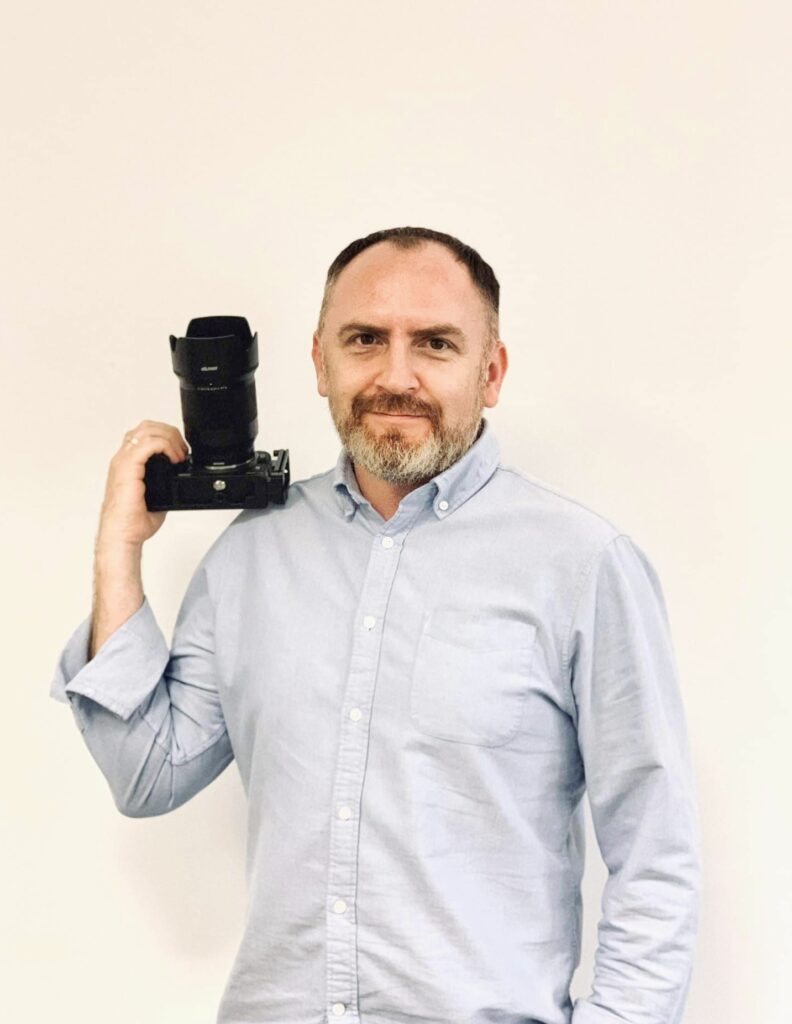
Author: Anna Przybyło-Józefowicz.
Interviewee: Karol Karnowski.
Instagram profile: Karo Karnow (@karo_karnow) • Zdjęcia i filmy na Instagramie.


